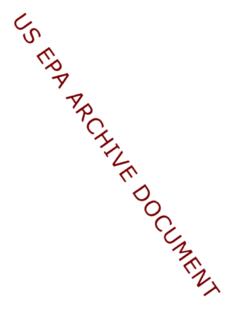Transcription of State (Title 22 TTLC STLC) (RCRA TCLP) Hazardous Waste ...
1 State ( title 22 TTLC & stlc ) and Federal ( rcra tclp ) Hazardous Waste Criteria Parameters (Inorganics) TTLC (mg/kg) stlc (mg/l) tclp (mg/l) Parameters (Herbicides) TTLC (mg/kg) stlc (mg/l) tclp (mg/l) Hazardous Waste Characteristics (RCI). Antimony 500 15 2,4 Dichlorophenoxyacetic acid 100 10 10 Exhibits the characteristic of reactivity should the Arsenic 500 5 5 2,4,5 TP (Silvex) 10 1 1 Waste have any of the following properties: Reactivity (40 CFR ) (T22:22 ). Barium 10000 100 100 Parameters (Pesticides). Beryllium 75 Aldrin (1) It is normally unstable and readily undergoes violent change Cadmium 100 1 1 Chlordane without detonating. Chromium 2500 560 5 DDT/DDE/DDD 1 (2) It reacts violently with water.
2 Cobalt 8000 80 Dieldrin 8 (3) If forms potentially explosive mixtures with water. Copper 2500 25 Endrin (4) When mixed with water, it generates toxic gases, vapors, fumes Lead 1000 5 5 Heptachlor & Epoxides in a quantity that presents danger to human and environmental health. Mercury 20 Kepone 21 (5) It is a cyanide or sulfide bearing Waste which, when exposed Molybdenum 3500 350 Lindane 4 to pH conditions between 2 and can generate toxic gases, Nickel 2000 20 Methoxychlor 100 10 10 vapors and fumes in a quantity that presents danger to human and Selenium 100 1 1 Mirex 21 environmental health. Silver 500 5 5 Toxaphene 5 EPA guidance level for releasable cyanide = 250mg HCN/kg Waste Thallium 700 7 Parameters (Semi volatile Organics) EPA guidance level for releasable sulfide = 500mg H2S/kg Waste Vanadium 2400 24 o Cresol 200 (6) It is readily capable of detonation or explosive reaction if it is Zinc 5000 250 m Cresol 200 at standard temperature and pressure, subjected to a strong Chromium VI 500 5 p Cresol 200 initiating source or if heated in confinement.
3 Fluoride salts 18000 180 Cresols (total) 200 (7) It is a forbidden explosive, as defined in 49 CFR or a class A. Asbestos 1% 2 4 Dinitrotoluene 2,4 Dinitrotoluene 0 13. or B explosive, as defined in 49 CFR and Parameters (Volatile Organic Chemicals) Hexachlorobenzene Liquid: Exhibits the characteristic of corrosivity if it is aqueous and Corrosivity (40 CFR. ) (T22: 22 . Benzene Hexachlorobutadiene has a pH<2 or > Also, if it corrodes steel (SAE 1020) at a rate of ). Carbon tetrachloride Hexachloroethane 3 > or " per year at a test temperature of 55c. Chlorobenzene 100 Nitrobenzene 2 Solid: If it is not aqueous and when mixed with an equivalent weight of Chloroform 6 Pentachlorophenol 17 100 water, produces a solution having a pH<2 or > 1,4 Dichlorobenzene Pyridine 5 Liquid: If it is aqueous and has a flash point of >60c (140f).
4 Aqueous Ignitability (40 CFR. 1,2 Dichlorobenzene 2,4,5 Trichlorophenol 400 solutions containing >24% alcohol by volume are considered ignitable ) (T22: 22 . ). 1,1 Dichloroethylene 2,4,6 Trichlorophenol 2 and do not require flashpoint testing. Methyl ethyl ketone (MEK) 200 Miscellaneous (Organics) Solid: If it is not aqueous and is capable, under standard temperature Tetrachloroethylene (PCE) Dioxin (2,3,7,8 TCDD only) and pressure, of causing fire through friction, absorption of moisture or Trichloroethylene (TCE) 2040 204 Organic Lead 13 spontaneous chemical changes and, when ignited, burns so vigorously Vinyl chloride and persistently that it creates a hazard.
5 Fish Toxicity ( title 26 sec (6)) (SMWW 18th Edition). An aqueous or solid Waste material is toxic or Hazardous if it has an acute aquatic 96 hour LC 50 (lethal concentration) of less than 500mg/L.




